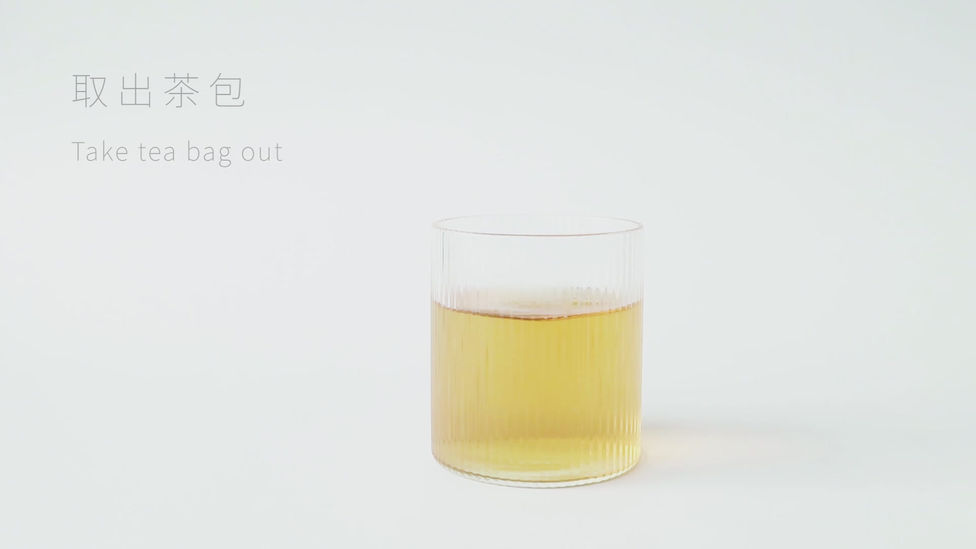
万叶园 MANYOEN
赏味无限,万叶清和
The Savour of Infinity, A Harmonious Blend of Purity
困在高墙里的风味
The Flavor Trapped within High Walls
茶,是中国重要的传统饮料。但是,即便是在中国,人们对茶的兴趣往往只是止步于生活习俗,少有人关心茶汤风味的无限可能。人群在林立的茶楼、茶馆里出入,却对泡茶的温度和时间毫不在乎。年轻人抵触带有封建遗宿的茶桌礼仪,却只能在被灌满调料的新式茶饮中寻找正在遗失的味道。中国茶叶原本有着多样而繁荣的品类,却在茶客的文化癔病中被繁复的修辞归纳成了相似的陈词滥调,从中读不出一点关于风味的乐趣。在大多数时候,茶只是少数人装点门面的稀缺品,仍被旧时的规矩圈养在高墙门第中,等到节假日时终于抛头露面,为主人笑脸迎客。现今早已是 21 世纪了,王谢堂前的燕儿,仍在门第高墙上栖息,俯视着墙外路过的百姓。
中国茶叶原本有着多样而繁荣的品类,却在茶客的文化癔病中被繁复的修辞归纳成了相似的陈词滥调,从中读不出一点关于风味的乐趣。在大多数时候,茶只是少数人装点门面的稀缺品,仍被旧时的规矩圈养在高墙门第中,等到节假日时终于抛头露面,为主人笑脸迎客。现今早已是 21 世纪了,王谢堂前的燕儿,仍在门第高墙上栖息,俯视着墙外路过的人们。
Tea holds significant cultural importance in China as a traditional beverage. However, even in China, people's interest in tea often stops at the level of daily customs, with few caring about the infinite possibilities of tea flavors. People come and go in crowded tea houses and tea shops, yet they pay little attention to the temperature and brewing time of tea. Younger generations reject the feudal customs associated with tea ceremonies and instead find solace in modern tea concoctions infused with various seasonings. Chinese tea, originally diverse and prosperous in its varieties, has been reduced to clichés and repetitive rhetoric by tea enthusiasts, devoid of any enjoyment of flavor. Most of the time, tea is merely a scarce commodity used by a few to embellish their social status. It remains confined within the walls of tradition, making occasional appearances during holidays or when entertaining guests. As we find ourselves in the 21st century, the aristocracy has faded away, but the imposing walls of tradition still stand tall. The swallows continue to perch upon these walls, observing the passing commoners beyond, oblivious to the hidden delights of tea waiting to be discovered.
Chinese tea, originally diverse and prosperous in its varieties, has been reduced to clichés and repetitive rhetoric by tea connoisseurs, devoid of any enjoyment of flavor. Most of the time, tea is merely a scarce commodity used by a few to embellish their social status. It remains confined within the walls of tradition, making occasional appearances during holidays or when entertaining guests. As we find ourselves in the 21st century, the aristocracy has faded away, but the imposing walls of tradition still stand tall. The swallows continue to perch upon these walls, observing the passing commoners beyond, oblivious to the hidden delights of tea waiting to be discovered.

打破高墙,是时候了
Time to Break the High Wall
是什么在阻碍年轻人接触茶产品呢?老气横秋的设计、语焉不详的介绍、复冗杂的流程,确凿从未考虑过年轻人的喜好。老人们抱怨“传统正在遗失”,却不打算为此做出改变。于是,我打算自己做点什么,看看能否找到我想要的答。为此,我阅读了大量关于茶文化、茶历史、茶工艺、茶风味的资料,却从中发现了一些让人失望的事实。
What is preventing young people from engaging with tea products? The outdated designs, unclear introductions, and convoluted processes have failed to take into account the preferences of young individuals. While the older generation laments the loss of tradition, they seem reluctant to embrace change. Consequently, I took it upon myself to seek the answers I desired. To begin, I delved into an extensive array of materials on tea culture, history, craftsmanship, and flavors, only to uncover some disheartening realities along the way.
传统并不那么传统
Tradition is not Traditional
现代所谓的传统饮茶方式仅形成于明清两代,言必称古实则毫无必要。依照各类古籍和出土文物可知,晋茶如熬煮茶粥;陆羽前的唐茶像是一碗胡辣汤;宋代点茶倒是在日本茶道中还能找到些影子;元代又以藏式酥油茶居多。直到朱元璋废团茶后,现代的散茶冲泡法才流行起来,同一时期,制铁技术改革也推动了茶叶炒青技术的发展,有效地通过杀青鲜叶阻碍其发酵的可能,由此才有了现在各式各样的不发酵茶——绿茶。
The nowadays so-called traditional methods of tea consumption is originated in the 15th century, it is unnecessary to refer ancient practices before. Based on a variety of ancient texts and unearthed relics, tea during about 400 A.D. was prepared akin to gruel; in 8th century before Lu Yu (陆羽), tea was like a bowl of hot spicy soup; the tea-serving style in 11th century can still be observed in the Japanese tea ceremony; and the 13th century predominantly favored Tibet butter tea. It was only after Emperor Zhu Yuanzhang (朱元璋) abolished the compressed tea-disk (团茶) in the earlier 15th century, the loose-leaf tea brewing method gained popularity. Concurrently, advancements in iron-making technology facilitated the processing of tea leaves, effectively hindering fermentation by promptly drying the fresh leaves, leading to the creation of various unfermented teas - known today as Green Tea.
饮茶方式历时演变图
Evolution of Tea Brewing Methods

风味并无太多奥秘
Tea Flavor is not a Secret
无论何种茶叶,无论发酵与否,决定其风味的主要成分无非是三种,氨基酸的鲜味,茶多酚的涩味,咖啡因的苦味,另有少量因发酵工艺不同产生的各种糖类、芳香物质。而在感官上,茶多酚与氨基酸的比例——酚氨比,很大程度决定了茶汤的品质。依照不同茶种、培育方式、芽叶配比可得到不同酚氨比的茶叶原料,再以此制作发酵程度不同的茶产品,并为之选择恰当的冲泡温度、时长,控制各类风味物质释出的速率,以实现茶汤的最优酚氨比。这便是茶汤风味的唯一奥秘。
Irrespective of the type of tea and its level of fermentation, its flavor is primarily determined by three main components: the umami taste of amino acids, the astringency of tea polyphenols, and the bitterness of caffeine, along with various sugars and aromatic substances produced through different fermentation processes. In terms of sensory perception, the ratio of tea polyphenols to amino acids, known as the phenolic-ammonia ratio, significantly influences the quality of the tea infusion. By obtaining tea raw materials with different phenolic-ammonia ratios based on different tea varieties, cultivation methods, and bud-leaf ratios, and then producing teas with varying degrees of fermentation, and selecting the appropriate brewing temperature and duration to control the release rate of various flavor substances, the optimal phenolic-ammonia ratio of the tea infusion can be achieved. This is the sole secret behind the flavor of tea infusions.
茶感官及成分风味轮
Tea Sensation & Chemical Composition Wheel

可惜的是,在世面上所见的茶产品中,表露出的只有儒家文化狂热的尚古风气,甚至不惜牵强附会曲解古文;我也从未在任何现有产品上看到过对“酚氨比”这一决定风味格调的因素有哪怕一丝的推广,反倒是不论发酵程度多高的茶产品都宣扬“富含茶多酚”,这无异于在证明这是一款“涩味极重”的茶品。人们有意地强化茶的文化属性,也因此在茶技术发展上闹了乌龙。在对茶种的培育中,从龙井群体种培育出的龙井 43 号最大的特征并不是在酚氨比上取得了多大进展,而是极大地提早了出产时间,刻意去附和人们盲目追捧“明前茶”的错误认知。
对文化的重视超越了茶本应有的风味属性,让“古法”成了限制人想象力和创造力的桎梏。仅有东南沿海在半发酵茶体系从借鉴了烘焙、烟熏、拼配等技术和理念,不断在拓宽茶感官的边界,别的地方很少有茶商为当地茶品类做出技术改革。而邻国日本,早在乾隆时期就发展出了促进氨基酸积累的“覆阴法”种植法,我们却对其不屑一顾,并坚持把茶多酚给人的涩味称作茶味,全不顾所有的制茶工艺分明都是致力于降低茶多酚含量这一事实。
没有人喜欢涩的口感,如果一定要把涩味当做茶味,便怪不得年轻人不爱喝茶,更怪不得年轻人偏爱加了许多调味料以盖住涩味的奶茶——而这可确凿是魏晋风姿、唐宋遗俗,比喝着明清散茶的老茶客们古典了许多。
Unfortunately, the tea products available in the market often exhibit a fervor for the worship of antiquity akin to Confucian culture, and there is even a tendency to misinterpret ancient texts. Moreover, I have yet to see any existing tea products promote even the slightest awareness of the "phenolic-ammonia ratio," a crucial factor in determining flavor and style. Instead, tea products, irrespective of their level of fermentation, often boast about being "rich in tea polyphenols," which essentially indicates a strong astringency in the tea. Furthermore, in the cultivation of tea varieties, the development of the Longjing #43 (龙井 43 号) variety from the Wild Longjing (龙井群体种) species has not shown significant progress in terms of the phenolic-ammonia ratio; it merely advances the harvesting time, conforming to the mistaken belief in the blind pursuit of "pre-Qingming tea."
The emphasis on culture transcends the supposed flavor attributes of tea, turning "ancient methods" into shackles that limit imagination and creativity. Only in the southeastern coastal areas has the semi-fermented tea system borrowed techniques and concepts such as baking, smoking, and blending, continuously expanding the boundaries of tea sensation. In other regions, few tea merchants have made technological innovations for local tea varieties, resulting in a stagnation of taste profiles and a missed opportunity for exploration and advancement. Our neighboring country, Japan, developed the "covered shading" (覆下園) planting method in the 18th century to promote the accumulation of amino acids, yet in China, there is disdain for this approach, with insistence on calling the astringency of tea polyphenols the tea flavor, disregarding the fact that all tea processing methods are aimed at reducing the amount of tea polyphenols.
Astringency is not enjoyable. If astringency is upheld as the tea flavor, it is no wonder that young people do not enjoy drinking tea, and it is even less surprising that they prefer drinking bubble tea with added flavorings to mask the astringency. This approach is rooted in the elegance of the 5th century and the customs of the 9th century, and is much more classical than the preferences of older tea connoisseurs who favor the loose-leaf tea brewing from the 15th century.
新时代和旧秩序
New Age & Old Order
当我们喝茶时候,我们究竟在喝什么?我的答案尤其简单,我无非是需要一种有点风味的饮料,而它正好又含有提神的成分,具备一定的实用价值。以此为目的,对应茶产品的定位也简单了起来 —— 风味适口、成分明确、饮用便捷。这三点并不难实现,产品设计、视觉设计角度都有多个方法可以尝试,这也并非我想解决的问题。当我试图定义一系列茶产品、创立一个品牌、传递一个观念时,一个更严峻的问题浮现在我脑中:茶,真的是一种全球性的饮料吗?我对此抱有许多怀疑。
When we drink tea, what exactly are we drinking? My answer is particularly simple. I merely need a slightly flavorful beverage that also contains refreshing elements, possessing a certain practical value. With this purpose in mind, the positioning of corresponding tea products also becomes simple — flavorful, clear ingredients, and convenient to consume. These three points are not difficult to achieve; there are multiple methods to attempt from both product design and visual design perspectives, which is not the issue I intend to address. When I attempt to define a series of tea products, establish a brand, and convey an idea, a more daunting question arises in my mind: Is tea truly a globally consumed beverage? I harbor many doubts about this.

茶饮料的种类和饮用方式都有极强的地域属性,每一个茶叶消费地区都赋予了它过度的文化属性,并据此建造了群体身份认同的护城河,围绕身份形成的习俗具有极大的惯性,对外来事物少有包容。在庞大的国际茶市场里,我们很少看到文化的交融和风味的创新,也不存广泛的流通与共存。在中国六大茶类中只有红茶占了大量的出口份额,日本的蒸青制绿茶在中国也没有太大市场,作为最大的茶叶出口国的肯尼亚其实只有红茶制作工艺。这些现象都反应了同样的现实,我们所见的世界茶市场其实只是三种文化各自的地缘市场。首先,是以中国为中心的东亚市场,饮茶方式主要是冲泡散茶纯饮,多饮用绿茶、乌龙茶;其次,是旧大不列颠殖民地市场,多饮用加了奶和糖的红茶;最后,是世界人均饮茶量最高的土耳其所属的阿拉伯市场。这三个市场近乎完整地对应了儒家、新教、伊斯兰教三大文化圈,茶风味、饮茶习俗也如这几个文化圈一般互不交融。
The types and consumption methods of tea beverages have strong regional attributes. Each tea-consuming region endows it with excessive cultural attributes and builds a moat around group identity, forming customs with great inertia around identity and showing little tolerance for foreign things. In the vast international tea market, we rarely see cultural integration and flavor innovation, nor widespread circulation and coexistence. Among China's six major tea categories, only black tea accounts for a large export share. Japan's steam-fixation green tea has not gained much market share in China, and Kenya, as the largest tea exporting country, primarily produces black tea.These phenomena all reflect the same reality: the world tea market we see is essentially three geographically-based markets of different cultures. Firstly, there is the East Asian market centered around China, where the main tea consumption method is steeping loose tea leaves and drinking pure tea, mostly green tea and oolong tea. Secondly, there is the market of former British colonies, where tea with milk and sugar is predominantly consumed. Lastly, there is the Arab market centered around Turkey, which has the highest per capita tea consumption in the world. These three markets almost perfectly correspond to the Confucian, Protestant, and Islamic cultural spheres, with tea flavors and drinking customs remaining distinct within each cultural sphere.
所期待的未来仍未到来
The Anticipated Future Has yet to Arrive
21 世纪早已到来,随着全球贸易的发展,人们的饮食文化也有了诸多交融。在东亚的一二线城市,不用去已席卷全球的星巴克,同样能喝到美式、拿铁、意式浓缩等来自多个文化的咖啡饮品,云南的咖啡爱好者甚至开发了用咖啡原液替代苦肠水做调料制作传统苦撒撇;而来自东西南北半球,选用不同原料、工艺酿造出的葡萄酒、威士忌也在全球市场广泛流通。与这样的市场相比起来,不论是�多元性还是创新性,茶叶和茶饮市场都显得过于无趣,而如鸡尾酒一般的新式奶茶虽然兴盛,但掩盖不了产品、品牌、工艺的匮乏。
The 21st century has long arrived, and with the development of global trade, people's culinary cultures have undergone considerable fusion. In the first and second-tier cities of East Asia, without needing to go to the globally dominant Starbucks, one can still enjoy coffee beverages such as Americano, Latte, and Espresso, originating from various cultures. Coffee enthusiasts in Yunnan, China have even developed "Nam Pia" (Chinese: 撒撇; Vietnamese: Nặm pịa) using coffee instead of digestive juices as seasoning. Meanwhile, wines and whiskies brewed with different ingredients and techniques from the four corners of the globe are widely circulated in the global market. Compared to such a market, both in terms of diversity and innovation, the tea and tea beverage market seem overly dull. Even though modern milk teas, akin to cocktails, are flourishing, they cannot conceal the lack of diversity in products, brands, and craftsmanship.

MANYOEN
Loose Leaf Tea


MANYOEN
Black Tea Bag
MANYOEN
Dark Tea Brick
Design / Copywriting / Photography / Product Landing / Filming: Boren @BOREN Studio
2019, Chengdu, China































